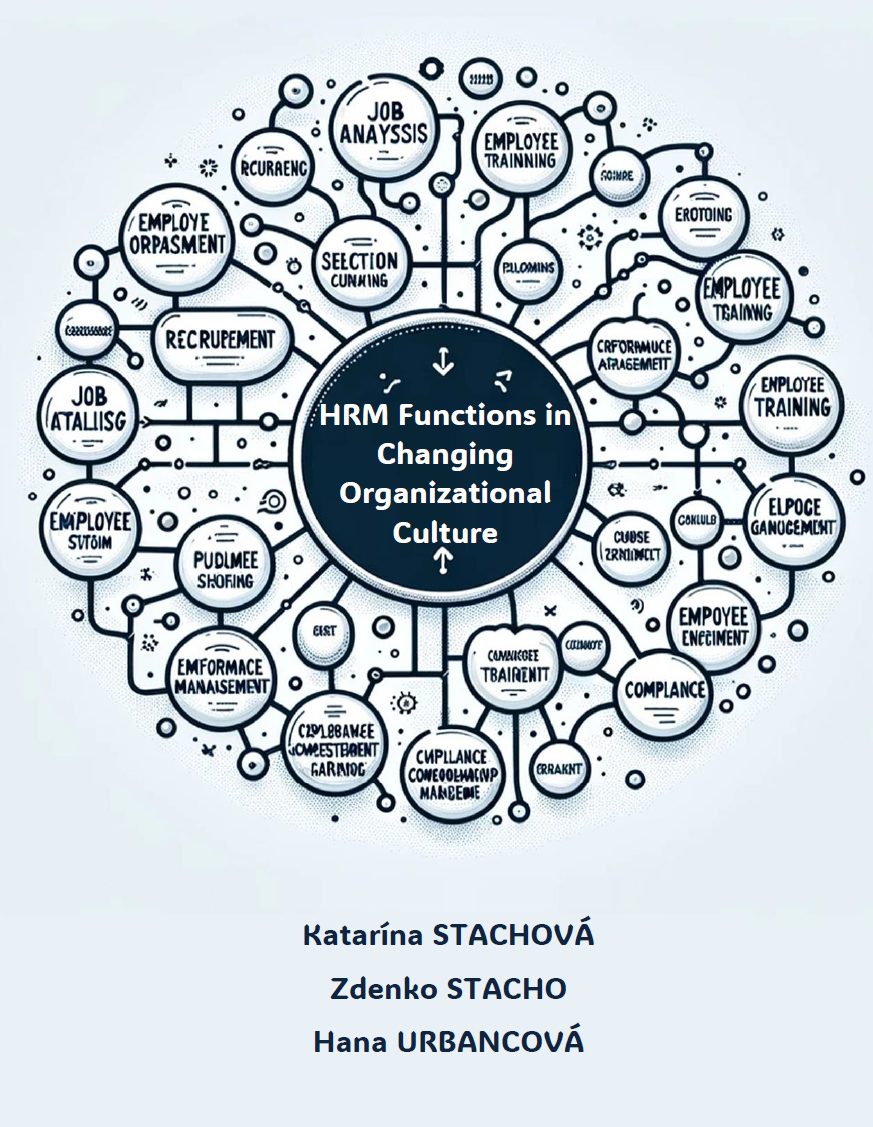HRM Functions in Changing Organizational Culture
Katarína Stachová – Zdenko Stacho – Hana Urbancová
Częstochowa: Oficyna Wydawnicza Stowarzyszenia Menedżerów Jakości i Produkcji
Prvé vydanie
139 strán
ISBN 978-83-63978-99-0
2024
„There are at least two kinds of games. One could be called finite, the other infinite. A finite game is played for the purpose of winning, an infinite game for the purpose of continuing the play. Finite players play within boundaries, infinite players play with boundaries. Surprise is the cause of the end of a finite game, but it is the reason for an infinite game to continue. Only those who can change can continue. According to this principle, infinite players live“ (Carse, 1986). Organizational culture is somewhat like the personality of a business; an appropriate organizational culture should be a compilation of ways of behaving and acting, both for the business as a whole and for its individual employees, on the path to achieving both the strategic goals of the business and the personal goals of the employees. Given the fact that the bearers of change, or the bearers of a suitable organizational culture, should be all the employees of the company, from whom it is expected that they will share and develop strategically necessary visions, approaches, and values, it is essential to focus on organizational culture and human resources simultaneously. The possibility for such simultaneous focus is given by the interconnection of organizational culture and human resource management, which is declared in their common primary role, which is, as Kachaňáková states: to create conditions for so-called positive behavior of employees in terms of strategic intentions and goals of the company.“ As Drucker states: „Every organization requires a commitment to common goals and shared values. Without such commitment, no organization can exist; it would be merely a chaotic mob. The organization must have clearly defined, comprehensible, and unified objectives. The mission of the organization must be clear and comprehensive enough to create a common vision. The goals embodying it must be clear, public, and continuously affirmed. The primary goal of management is to establish, articulate, and illustrate these intentions, values, and goals.“ From the above, it follows that it is necessary to ensure in the company the highest possible congruence or overlap between the values declared within the concept of sustainable development, values promoted by the company, and the values of the employees. To achieve the highest degree of harmony between human resources in the company and the desired elements of organizational culture, it is necessary to link activities within the various functions of human resource management with the required values, attitudes, and work behavior. Such linkage is a key prerequisite for the positive acceptance of suitable organizational culture by company employees, its anchoring in their behavior, and subsequent sharing and spreading of organizational values.
